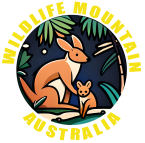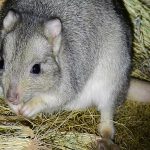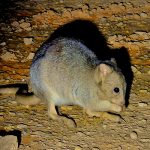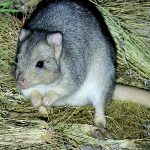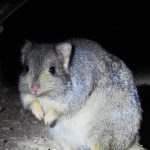LESUEUR'S RAT-KANGAROO
The Lesueur’s Rat-Kangaroo also known as the Boodie and Burrowing Bettong, was once widespread across mainland Australia, but today, it can only be found in select locations. These include offshore islands such as Barrow Island, Bernier Island, Dorre Island, and Boodie Island, as well as some mainland conservation areas where reintroduction programs have been successful. These areas provide the Boodie with the arid and semi-arid environments it prefers, characterized by sandy soils ideal for burrowing.
The Boodie is currently listed as Vulnerable. While their populations have drastically declined due to habitat loss and introduced predators, conservation efforts have shown promise. Reintroduction programs, habitat restoration, and predator control measures are crucial to ensuring their survival.
In the wild, the Boodie typically lives for about 3 to 5 years. Their lifespan, like many small mammals, is influenced by factors such as predation, food availability, and environmental conditions.
The Boodie is an omnivore with a diet that primarily consists of roots, tubers, seeds, and fungi. They have a particular fondness for the underground fruiting bodies of fungi, which they dig up with their strong forelimbs. This diet not only sustains them but also plays a crucial role in the ecosystem by aiding in the dispersal of fungal spores, which helps maintain soil health.
Boodies are known for their unique breeding habits. They can breed throughout the year, with females capable of producing multiple offspring annually. After a gestation period of about 21 days, a single joey is born. The tiny, underdeveloped joey then makes its way to the mother’s pouch, where it continues to grow and develop for around three months. After leaving the pouch, the young Boodie stays close to its mother for a few more weeks before becoming independent.
True to their name, Boodies are exceptional burrowers. They create extensive burrow systems that can house multiple individuals, providing shelter from predators and extreme weather conditions.Unlike many other marsupials, Boodies are social animals. They live in colonies, often sharing their burrows with other Boodies, which helps them stay warm and protected.
Boodies are nocturnal, meaning they are most active during the night. This behaviour helps them avoid the harsh daytime temperatures and predators.
The Boodie holds a special place in the cultural heritage of Aboriginal Australians. Traditional knowledge and stories often highlight the Boodie’s role in the ecosystem and its significance as a food source. Aboriginal people have long understood the importance of the Boodie’s burrowing activities in maintaining healthy soil and vegetation. These stories and practices underscore the deep connection between Indigenous Australians and their environment, emphasizing the need to respect and preserve this delicate balance.
The story of the Boodie is one of both challenge and hope. While their populations have drastically declined due to habitat loss and introduced predators, concerted conservation efforts are helping to bring them back from the brink. By supporting habitat restoration, predator control, and reintroduction programs, we can ensure that the Boodie continues to thrive in its natural habitat.
As we consider the resilience and adaptability of the Boodie, let us be inspired to protect and cherish the unique wildlife and ecosystems that make Australia so extraordinary.
